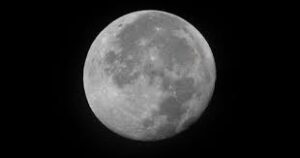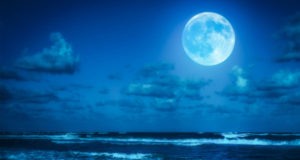There was a rare full moon + blue moon for Halloween this year. Did you see it? Catch it waning tonight and for the rest of the week.
Here’s more from CNET:
This Halloween’s Blue Moon Will Bring a Rare Treat to the Skies
For the first time since World War II, people in all parts of the world will be able to see the Oct. 31 display.
Halloween may look different this year due to coronavirus restrictions, but at least we can enjoy a spooky spectacle in the sky: a rare second-in-the-month full moon to cap off a month of glorious skywatching.
The full moon that will be visible on Oct. 31 is called the blue moon because it’s the second full moon of the same month — following the harvest moon of Oct. 1 through Oct. 3. And in a rare treat, the 2020 Halloween full moon will be visible to the entire world, rather than just parts of it, for the first time since World War II.
“When I was teaching, my high school students thought a full moon occurred every Halloween,” astronomy educator and former planetarium director Jeffrey Hunt told me. Not quite, though pop culture decorations sure make it seem that way. The last Halloween full moon visible around the globe came in 1944, he said. He’s written about the event on his web site, When the Curves Line Up. There was a Halloween full moon for some locations in 1955, but that didn’t include western North America and the western Pacific, Hunt says.
While this year’s Halloween full moon will be visible in all parts of the globe, that doesn’t mean every single citizen will have a view. Residents across both North America and South America will see it, as will Africa, all of Europe and much of Asia. But while Western Australians will see it, those in the central and eastern parts of the country will not.
Know time zones well? “Every time zone has it except those east of (GMT) +8 time zones if they have daylight time, or (GMT) +9 with no daylight time,” Hunt says.
Want to see the Halloween full moon? It’s so bright at the full phase it doesn’t matter if you’re in a crowded city or out on the farm. And you don’t need pricey equipment.
“Walk outside, and take a look,” Hunt says.



